Fort Amiel ~ A significant historical building in our town ~ Part Five: The Traditional Zulu Homestead & Muthi/Herbal Garden
Last week I was a tourist in my own town, while I took my sister and her family around Newcastle, KZN, South Africa. Since I am good friends with the museum curator he took us on a personal tour of Fort Amiel Museum, and even though I have done the tour a couple of times, I still enjoy it, as there are always new things to notice. This is part of a series of 6 focusing on different areas of the Fort. Scroll to the bottom of this article for a brief history of the Fort.
The Traditional Zulu Homestead & Muthi/Herbal Garden
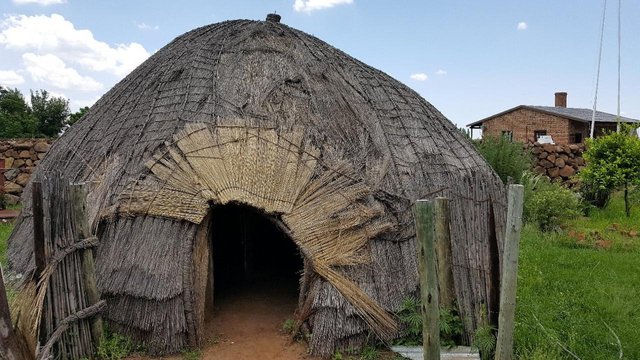
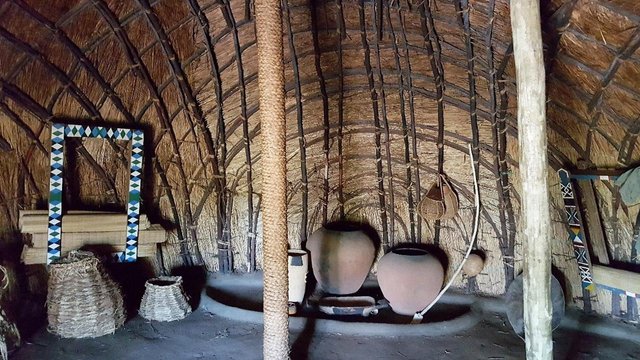
Rolled up grass mats to sit on, and grass storage baskets.

The stones on the left would have been used for grinding maize (corn).
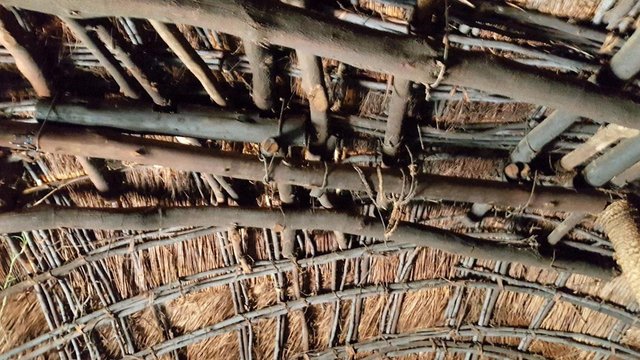
This hut is really spacious inside, and amazingly cool as we were visiting the Fort on a very HOT day. The hut is divided in half, though it is difficult to see that with the photos I took, as men and women would have to sit in their own sections. Food would be cooked on the opposite end of the entrance. Utensils and pots, and many other items needed for daily living would be hung from the roof. I have found the widespread use of grass (veld) very striking. During our autumn winter months our grass grows very tall and dries out. It is very strong. It is cut into bales and still used for thatching in outdoor entertainment structures we call lapas. The thatching on our lapa is over 10 years old and I think it will last a few more years until it needs to be redone.
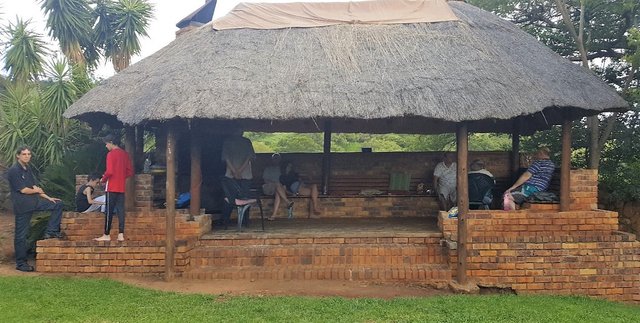
Our lapa where we held both our Christmas and New Year's meals. (Louis was invited!)

The grass in early autumn. This is still not ready for thatching. The golden African fields are the home of my heart!
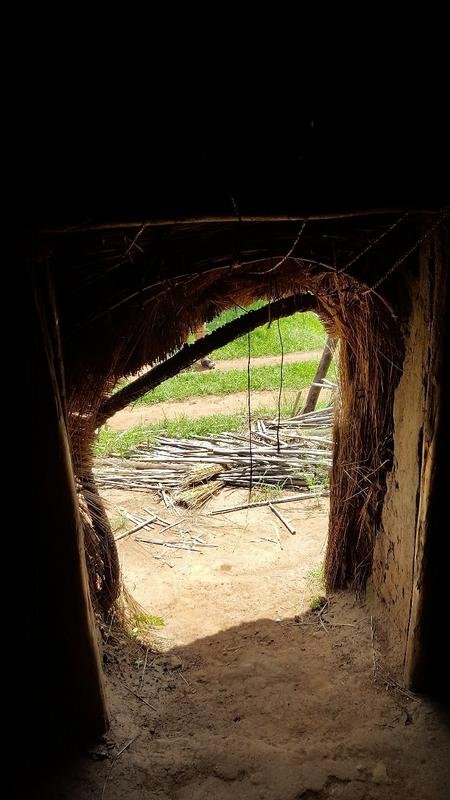
The entrance is really small and you have to stoop so far down to enter, that it is easier to go in and out backwards. The floor is made from compacted mud.

Louis, the curator, in blue, explaining a few things to my extraordinarily hot family!
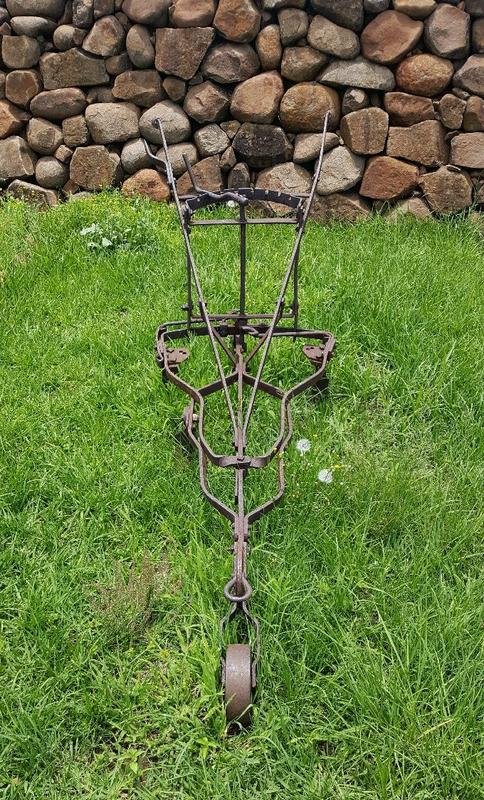
An old plough.
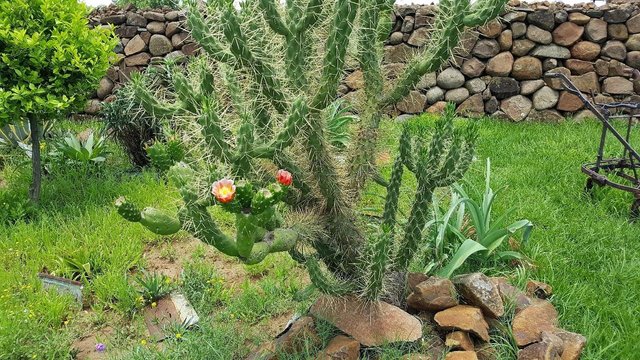
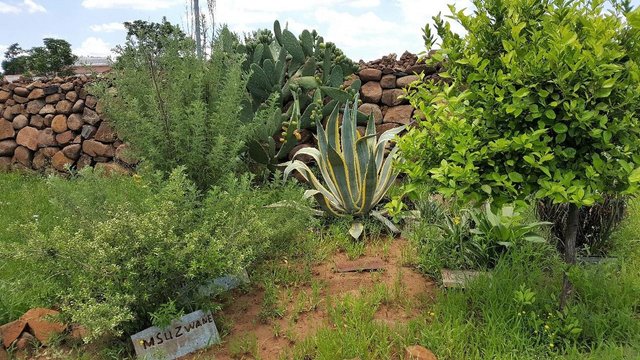
The garden section of the museum is not well maintained at all, and due to recent heavy rains as well as festive period languor it is a mess. These are a few herbal and medicinal plants traditionally used by the Zulus for making medicine (muthi).
Fort Amiel History
Fort Amiel was built in 1876 by the British as a military stronghold and a signalling station. It played a significant role in the Anglo-Zulu War of 1879, as well as the First Anglo-Boer War of 1881. It usually housed about 200 troops, but swelled to as many as 1500 troops in 1881. By 1882, all the outlying buildings, vehicles and supplies were auctioned off, including a large selection of liquor! Today only the centre part of the Fort remains, and was restored in the 1990's to house a cultural history museum. When the Second Anglo-Boer War broke out in 1899 the British decided to abandon Newcastle altogether, as it being the northernmost town of the Natal Colony, it was deemed to be too close to the Boer Republics. Newcastle was shortly thereafter invaded by the Boer forces, and the Fort was occupied by the Hollander Commando. Newcastle was briefly renamed Viljoensdorp during this period. Newcastle was retaken by the British seven months later, with much pomp and ceremony! Fort Amiel is a popular stopover on South Africa's famed Battlefields Route.
When I was a child I had a friend who lived near to the Fort and it had not yet been restored. It was one of our favourite places to play! Just last year, the museum curator kindly allowed my daughter to hold her yoga classes in the canteen (which has not yet been fully restored) until she outgrew the place. On a quiet day, looking out to the surrounding hills, the history seems almost tangible!
@onetree

What a gorgeous cactus. At us they grow only in flower pots in an apartment.
Thanks!
Really interesting content! I've never seen a traditional Zulu Homestead, it's really an interesting building! Thanks for share so many history and cultural info with us ^_^
It was an absolute pleasure, thank you for your comment!
I need to make this a family outting as well, thank you for sharing:)
Are you from Newcastle?
That hut looks very interesting. I wonder why the entrance has to be small. Is it for security reason? You Lapa look so nice! many people could camp out in there!!
It could be for security reasons, but also to keep the weather out? I will check with my friend Louis, the curator.
Wow that looks like an amazing journey thank you for the education must put this on my bucket list!
Very historical place, it's very good for visitors
wow man you given that lot of information about Fort Amiel. your post help us to increase our knowledge the Fort Amiel history. thanks a lot for share this post. I'm waiting for A significant historical building in your town ~ Part six.